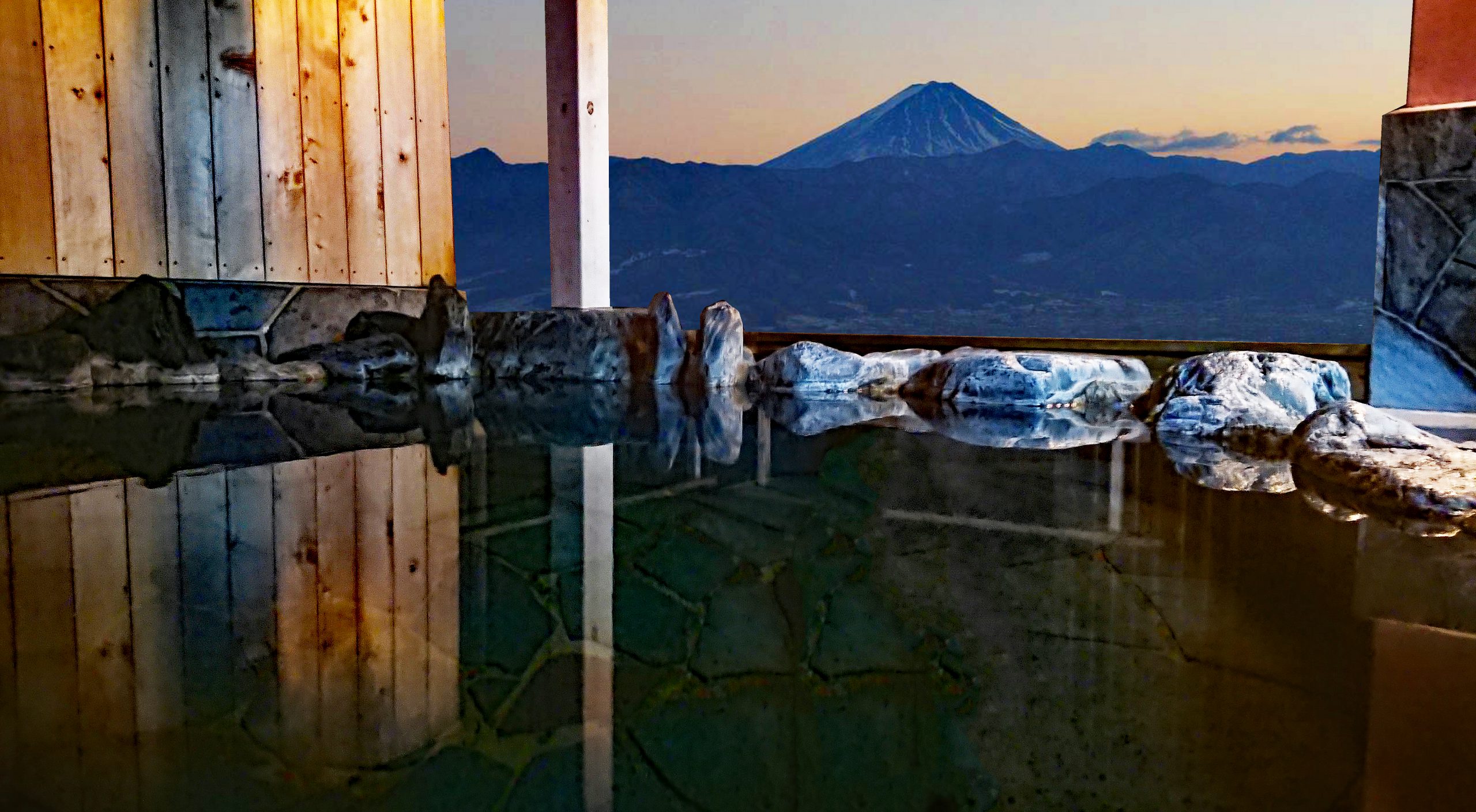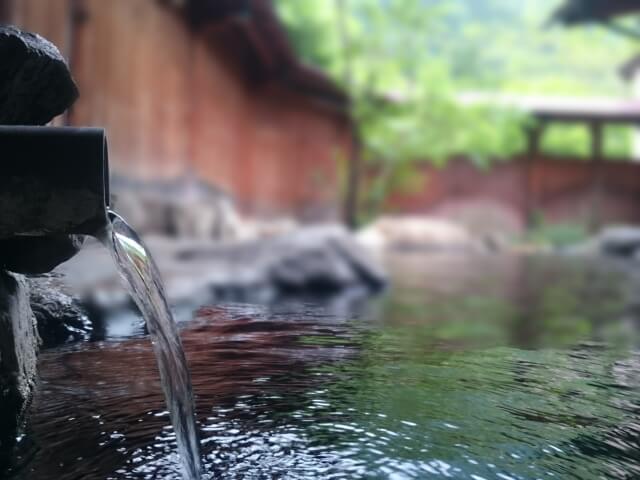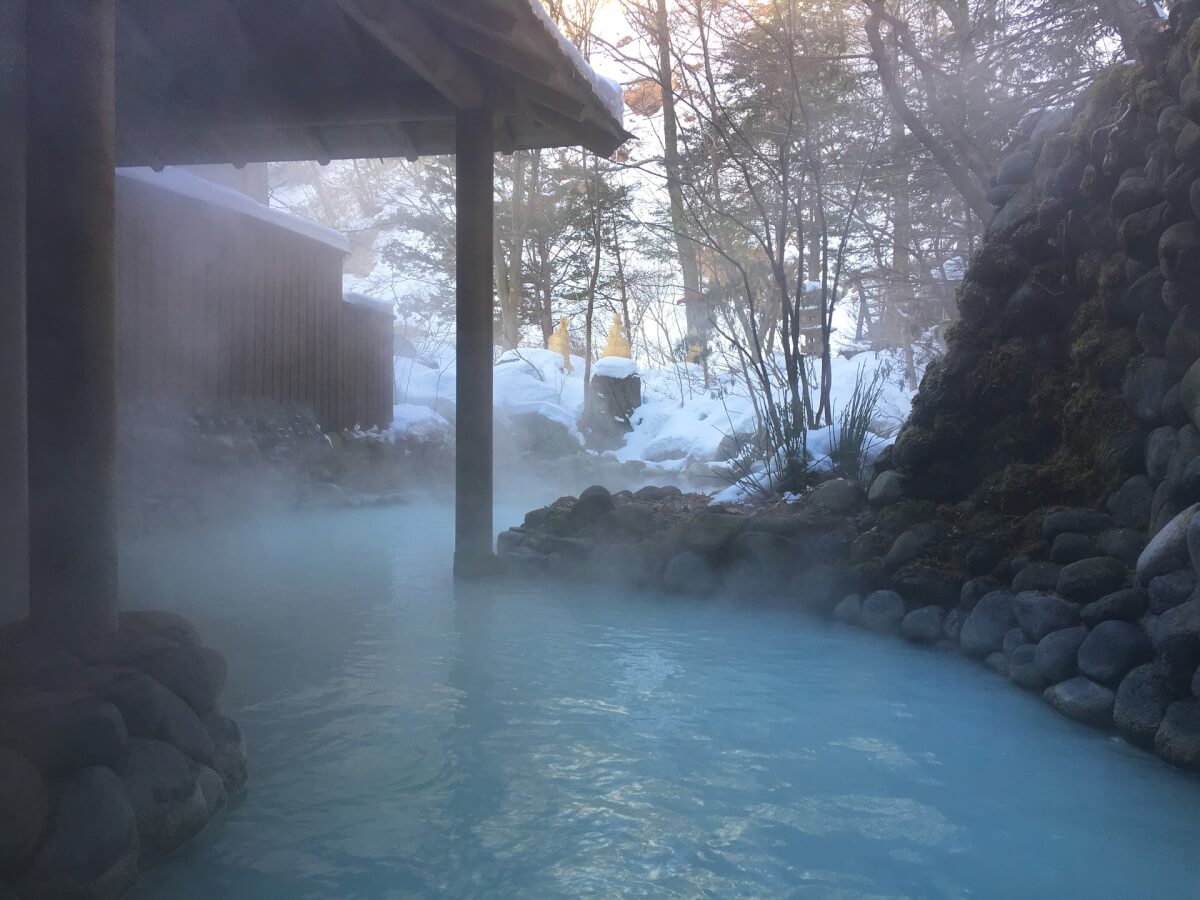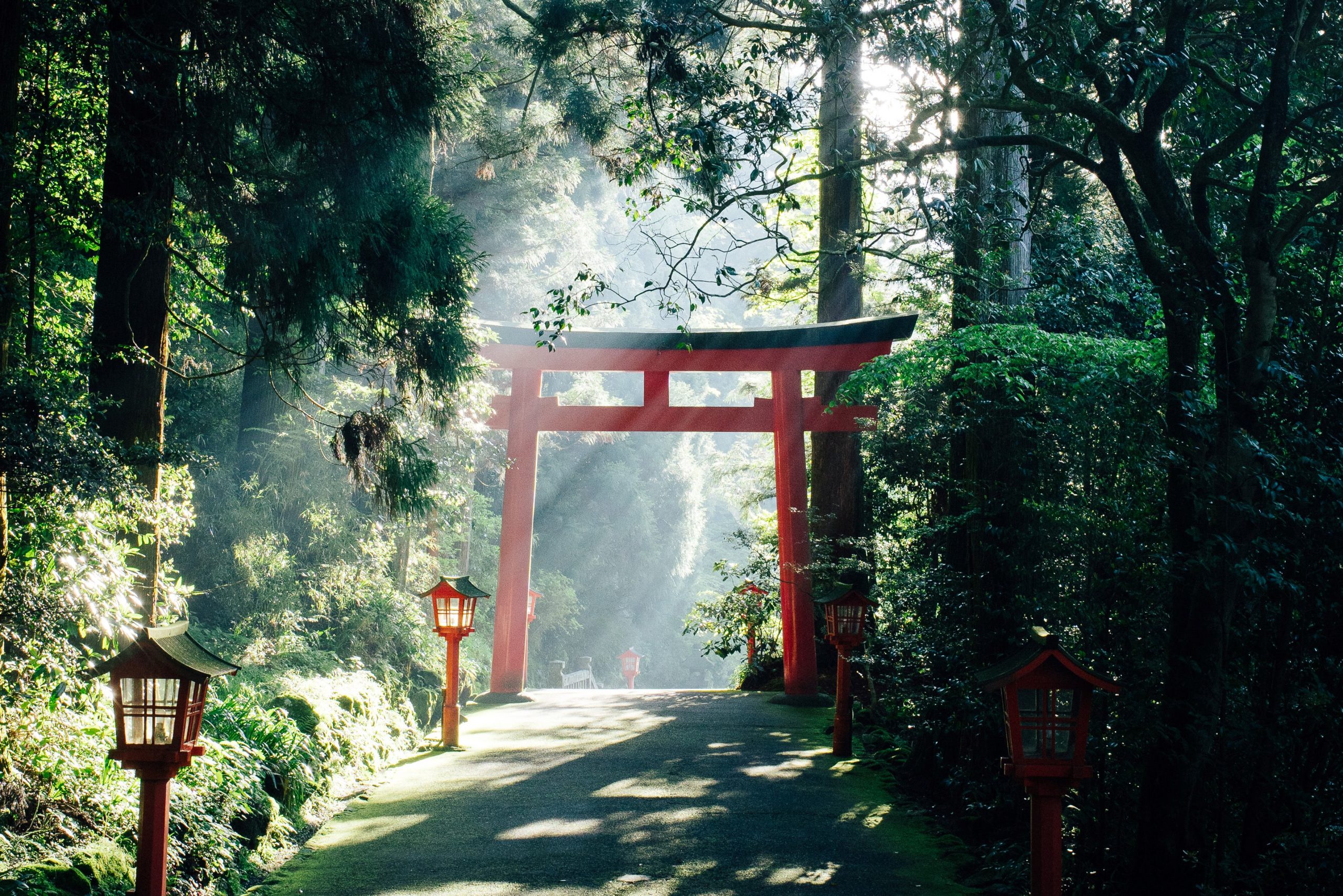As you might know, Japanese people love to take a bath and soaking in a bath is a Japanese custom that today is still very much alive. Although taking a shower is becoming more and more popular especially among young generations, it is still part of the daily routine of many Japanese people and an important cultural aspect. For international tourists, enjoying the Japanese bathing culture is something that shouldn’t be missed. In fact, it is one of the many reasons to visit Japan! In this blog, we will introduce the history of bathing in Japan, basic bathing customs to know before you visit an onsen or sento, and best bathing experiences around Tokyo!
If you are looking for the do’s and don’ts while taking a bath, read our blog about how to enjoy a Japanese onsen and sento alike.

- 1. Why do people take a bath in Japan?
- 2. History of bathing in Japan
- 3. Difference between sento and onsen
- 4. Why are tattoos often not allowed in onsen?
- 5. Difference between Japan and Western countries
- 6. Great bathing spots that you can visit around Tokyo!
- Japan Wonder Travel Tours
- Other articles you might enjoy
1. Why do people take a bath in Japan?
It is often said that Japanese people like to keep everything clean, not just the body but in general. International visitors are often taken away by the clean streets in Japan, the absence of litter and the spotless trains. Japanese people also care a lot about personal hygiene, which well explains why baths are taken on a daily basis. A clean body, makes anyone feel refreshed after a long day, both mentally and physically. In addition, taking a hot, refreshing bath regularly brings a range of health benefits to your body. It promotes good blood circulation, relieves painful muscle tensions, and helps your body stay warm after getting out of the bath. But it is not only for body, taking a bath is also a social outing. In Japan there is a high number of public bathing facilities which anyone, regardless of age, can use to clean themselves and socialize with the locals community.

2. History of bathing in Japan
History of bathing culture in Japan is said to date back around the 6th century. At the time, Buddhism was introduced from China to Japan along with a bathing culture. In Buddhism, taking a bath was regarded as an effective way to stay away from illness and maintain good hygiene.
During the Edo Period (1603-1868), public bath house known as sento (銭湯) became popular among citizens. A number of new sento were built around the country, which eventually became a part of traditional custom of Japanese people that is still common even today. Many Japanese had minimal bathing facilities at their home or apartment, only limited numbers of upper-class samurai could afford to build their own private bath at their house. Hence taking a bath was also used to socialize and connect with the community. It was not until Japan experienced a rapid economic growth after WWⅡthat bathing facilities at home became more common among people regardless of their social-economical status.
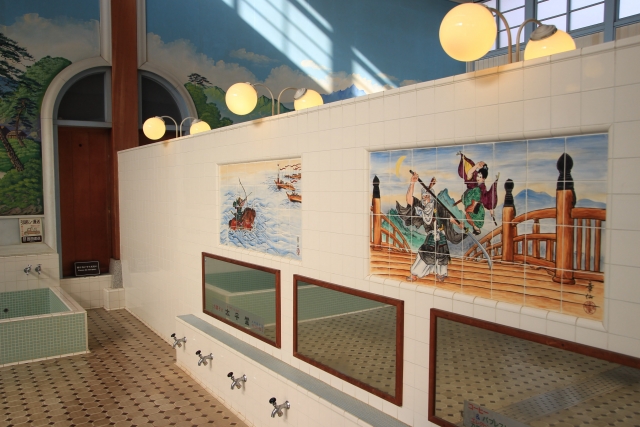
3. Difference between sento and onsen
In Japan, you have two options to go for a bath: you can go to the sento or the onsen to have a relaxing experience. But how are they different? Which of them should you go? Let’s have a look at the differences between a sento and onsen in Japan!
1. Sento (銭湯)
Generally speaking, sento refers to local public bath houses that you can find both in big cities and countryside around Japan. They usually use normal water from a tap to offer a casual bathing experience. There are no specific regulations or rules about the minerals contained in the water. Also, the fee is stipulated by city laws so that they don’t get too high for people to pay.
- Location : old town area in big cities/ rural areas
- Minerals: None or little
- Fee: small fee that differs per city, Tokyo: ¥470
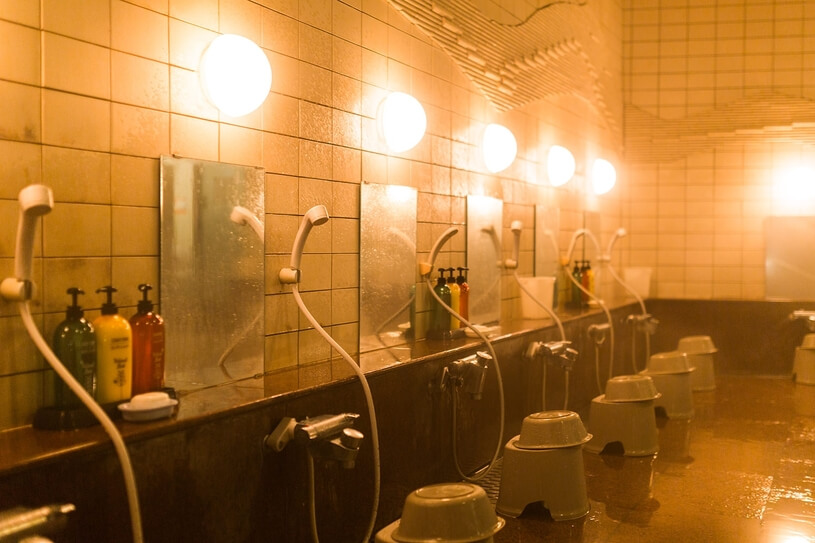
2. Onsen (温泉)
Japan is home to many volcanoes, which is why there are more than 20,000 onsen facilities located across the country. Hot springs are called onsen in Japanese and are very popular. Some famous onsen resorts in Japan are Beppu Onsen in Kyushu and Hakone Onsen near Tokyo. Onsen are officially administered by the Ministry of Environment and there are strict requirements and criteria that onsen need to meet to become an officially recognized onsen facility. These requirements include the amount of specific minerals that must be contained in the natural source of the water. While onsen offers a satisfying, high-quality bath experience, the fee can be decided by each facility and are often higher than sento – but so are the health benefits.
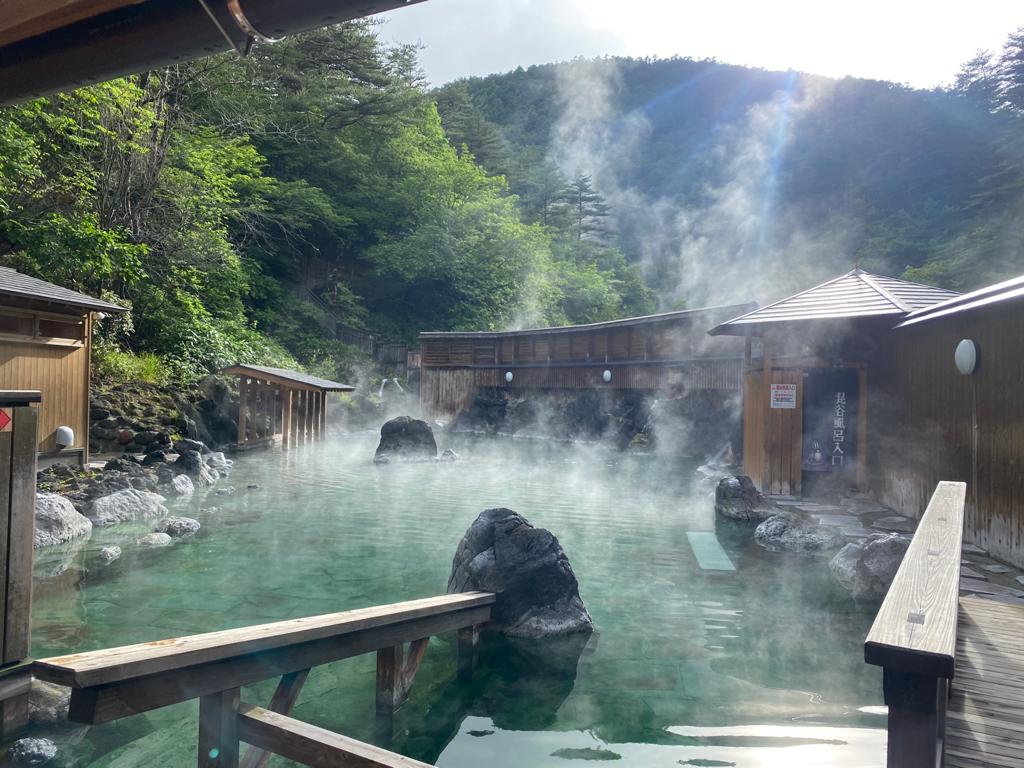
- Location: famous onsen resort/ onsen facilities in downtown
- Minerals: Stipulated by law
- Fee: Depending per facility
4. Why are tattoos often not allowed in onsen?
In many cases, tattoos are not allowed at public bathing facilities in Japan. It is mainly because many Japanese people have a negative impression of it. It partly attributes to the stereotype images about tattoo which remind them of Yakuza (やくざ), the infamous Japanese crime group or gangs who often have irezumi (Japanese traditional tattoo) on their body. Irezumi was also once used as a symbol of punishment for crimes during the Edo period.
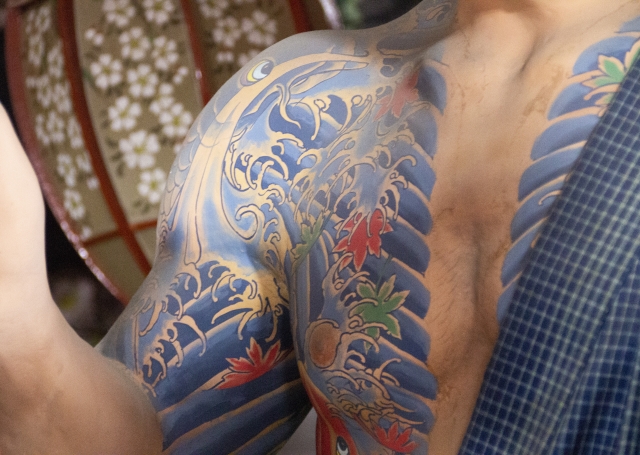
Because tattoos were associated with crime, most bathing facilities don’t accept people with tattoos on their body. However, lately this is changing, some facilities do allow small tattoos are you can cover them with a bandage for example. There are also private bathing facilities that will welcome you and offer a relaxing bath experience without worrying about being stared at by others.
Here is a helpful website that has useful information about tattoo-friendly onsen facilities around Japan!
5. Difference between Japan and Western countries
Needless to say, Japan is not the only country where people take baths. Comparing the differences in bathing culture between Japan and Western countries will allow you to understand how bathing culture has developed and what role it has played in the Japanese society!
Purpose of bathing
Japanese people take a bath not only to keep their body clean, but also to relax and spend a refreshing time and connecting this the community. Many Japanese believe it also washes away the fatigue, hence a bath is taken often every night. On the other hand, Western people often take a bath only for the purpose of personal hygiene. Many people don’t expect to spend a long time in the bath to relax.
How often do you take a bath?
In Japan, most people take a bath every single day. Some people prefer a shower as it allows them to save water and time. However, taking a short shower is much more common than taking a bath in other countries. In some countries such as Australia, water shortage forms a significant problem and people are being encouraged not to use too much water on a daily basis.
Taking a public bath
You might feel a bit embarrassed to be naked and share the same bath with others who you don’t know. But in Japan, many people are accustomed to taking a public bath. Some people might feel uncomfortable to get naked in public, but don’t let that keep you from having an onsen experience. In some Western countries people wear a swimsuit when they go to public spa or bathing facility, this is almost never the case in Japan. Only in mixed onsen facilities you are required to wear clothing that are supplied by the facility.
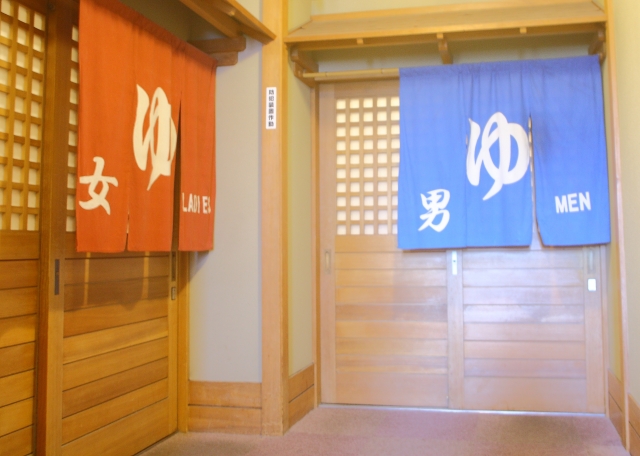
6. Great bathing spots that you can visit around Tokyo!
1. Oedo Onsen Monogatari/大江戸温泉物語 (Odaiba area)*Closed in September
Oedo Onsen Monogatari is a popular onsen facility located in the modern Odaiba area. Relaxing natural hot springs are offered in the Onsen facilities such as a spacious open-air bath. Rent a yukata (浴衣), traditional Japanese clothing and enjoy sushi or ramen at the restaurant after taking a bath. Spa and relaxation services are also available!
Oedo Onsen Monogatari
Opening hours 11am – midnight (※last entry is at 11pm)
Admission fee ~ ¥2,768 (adult)
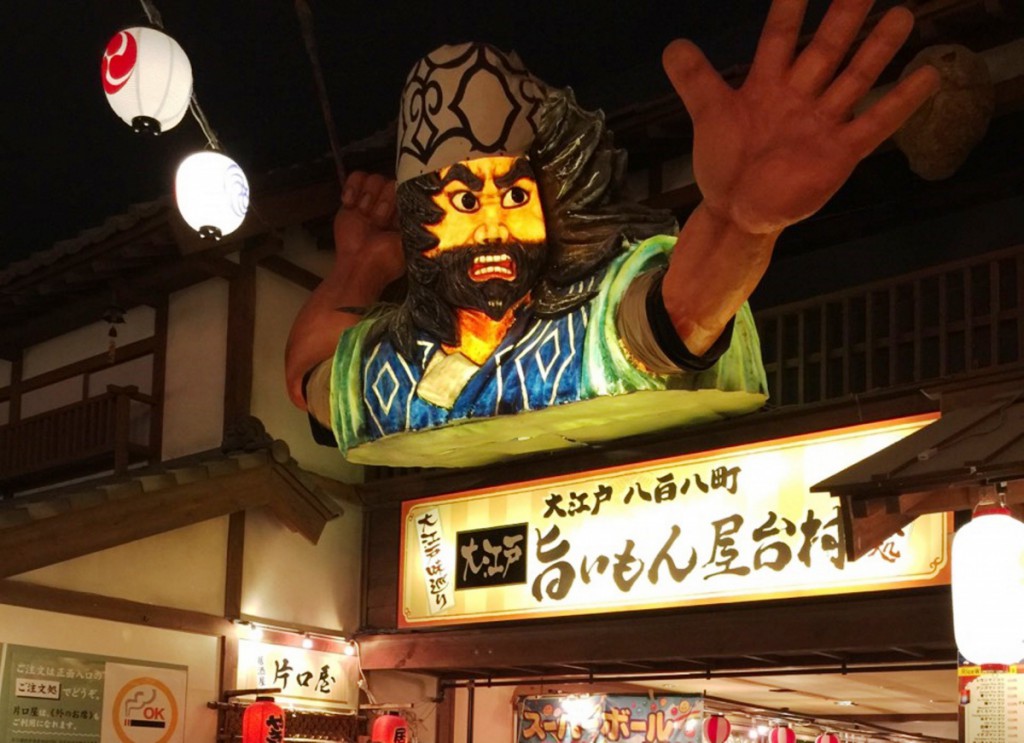
2. Mikokuyu/御谷湯 (Sumida area)
Reopened after a renovation in 2015, Mikokuyu is a popular bath facility which is loved by both locals and international tourists. It is only 20 min walk from Tokyo Skytree, and they are known as a tattoo-friendly bath facility! A range of bathes are offered at the fourth and fifth floor with different temperatures. Enjoy the traditional Japanese paintings of the wall, or the impressive view of the Skytree from the window!
Mikokuyu
Opening hours 3,30pm – 2am (weekdays/ holidays), 3pm – midnight (Sundays)
Admission fee ¥470 (adult)
3. Yomiuriland Okanoyu /よみうりランド 丘の湯 (Inagi city)
Yomiuriland is a popular theme park in Inagi city, Tokyo. They offer a range of enjoyable experiences such as exciting rides, entertaining shows, unique seasonal events and much more! “Okanoyu” (丘の湯) is a family-friendly onsen facility offering high-quality experiences! Soak in an open-air bath, or enjoy a range of food menus at restaurant with your kids. There is also a Kid’s room available with pictures books and toys for the children. It is a perfect spot for the entire family to spend a memorable weekend!
Yomiuriland Okanoyu (※Japanese only)
Opening hours 10am -9pm (※last entry is at 8.30pm)
Admission fee ¥670 (adult)
4. Hakone Onsen/箱根温泉 (Kanagawa prefecture)
Hakone Onsen is a popular onsen resort area nestled in the west part of Kanagawa. It attracts numerous tourists as a perfect weekend trip destination from Tokyo. Staying at one of the luxurious traditional Japanese inns (ryokan) will be an unforgettable experience. Famous tourist spots such as Lake Ashinoko (芦ノ湖) and Owakudani Valley or Hell’s Valley (大涌谷) are also worth a visit!
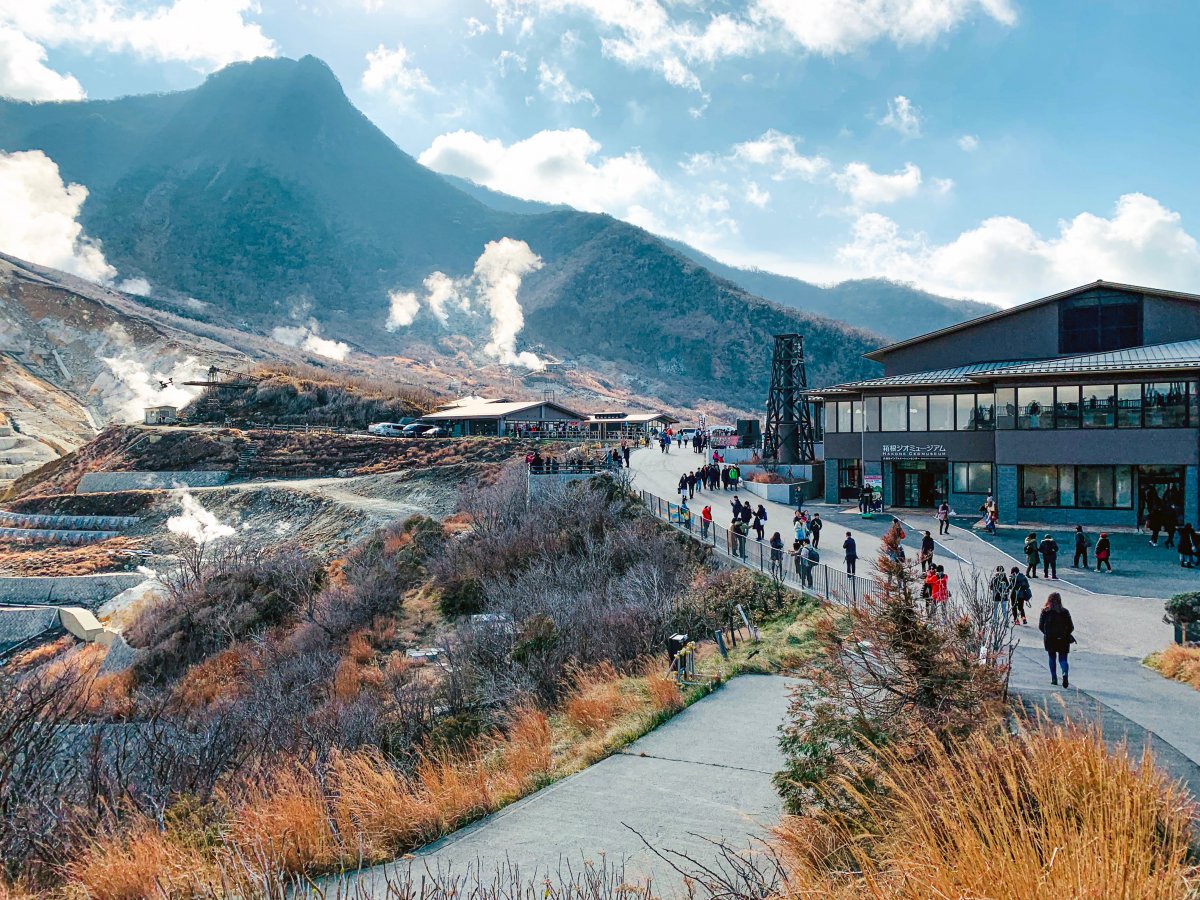
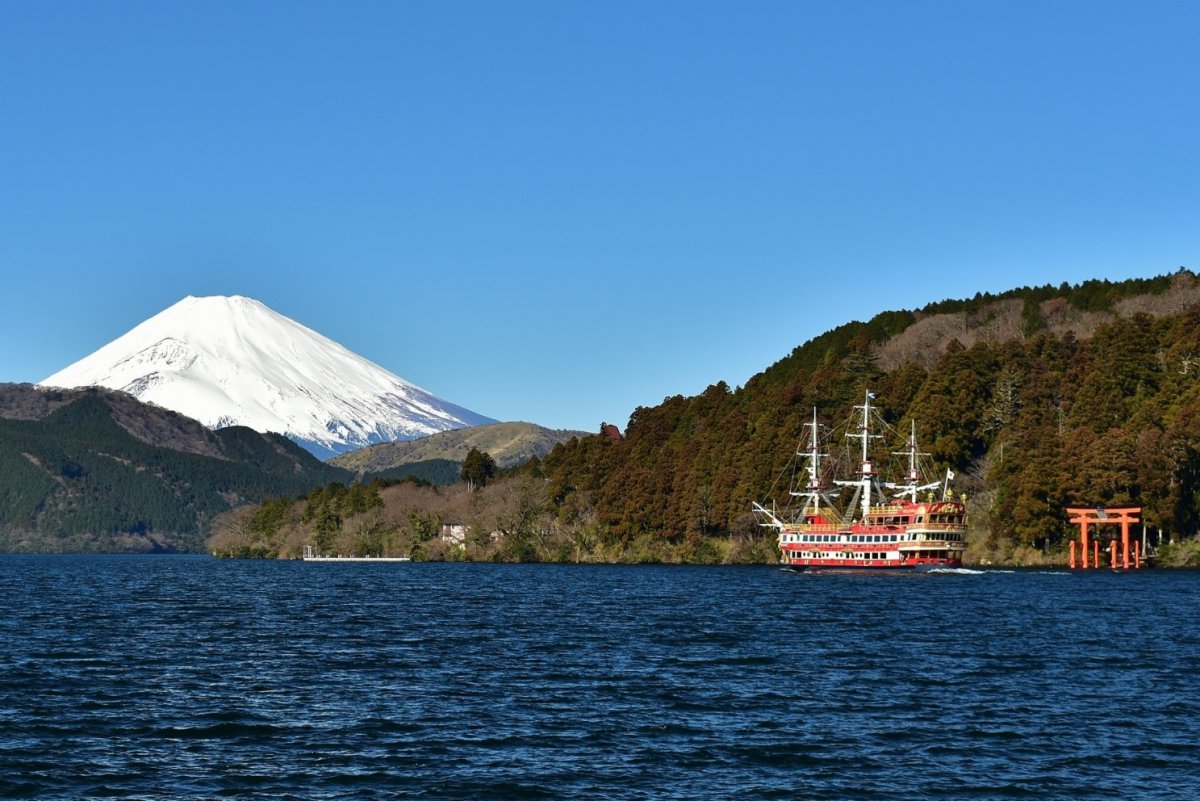
5. Kusatsu Onsen/草津温泉 (Gunma prefecture)
Nestled in Gunma prefecture, Kusatsu Onsen is widely known as one of the three greatest onsen resorts in Japan. Explore the central part of the scenic town featuring yubatake (湯畑), beautiful hot water fields filled with 100% natural hot spring water. There are many traditional Japanese inns that also offer a onsen experience! Kusatsu Onsen is great for a day trip or even a weekend trip and enjoying a short bath will be enough to make your skin silky and smooth!
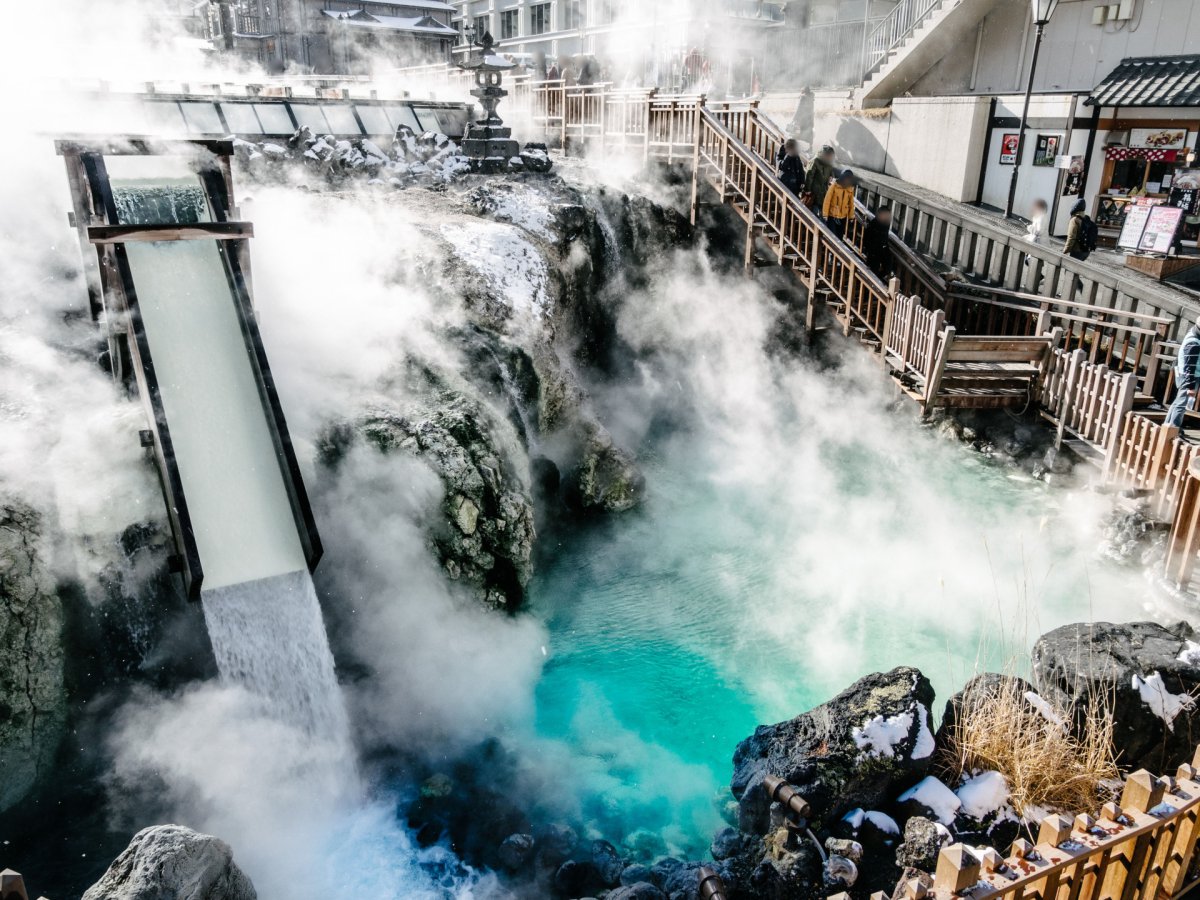
Japan Wonder Travel Tours
Japan Wonder Travel is a travel agency that offers guided tours throughout Japan.
From private walking tours to delicious Food and Drink tours, we can help you organize the best tours just for you! If you want to explore Japan and learn more about the history and backstories of each area you are visiting, our knowledgeable and friendly English speaking guides will happily take you to the best spots!
In addition, we can provide you with any assistance you may need for your upcoming trip to Japan, so please feel free to contact us if yu have any questions or need some help!
▶Tokyo Tsukiji Fish Market Food and Drink Tour
Explore the most lively and popular fish market in Tokyo and try some of the local’s favorite street foods and sake with one of our friendly and knowledgeable English speaking guides!

▶Tokyo 1–Day Highlights Private Walking Tour (8 Hours)
There’s no better way to explore an area than taking a tour with a knowledgeable local guide. You will have the chance to learn about the history and interesting background stories of Tokyo, as well as discover some hidden gems which can be hard to do without a guide.

▶Mt. Fuji Day Trip Bus Tour from Tokyo
Experience the breathtaking views of Mt. Fuji by visiting the highlights of the area on our guided sightseeing bus tour! Departing from Shinjuku in central Tokyo, you can travel comfortably to all of the best spots in the area by bus.

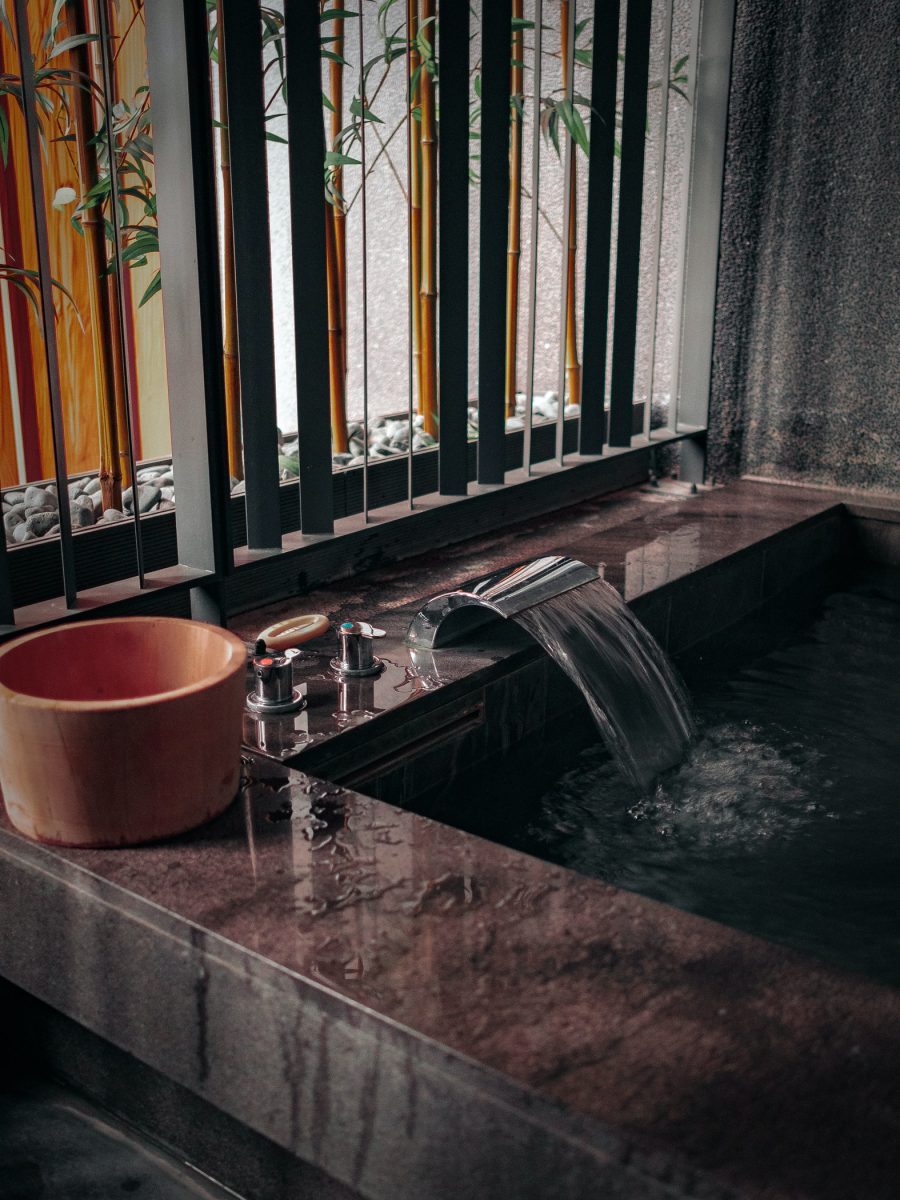
The Japanese bathing culture plays an important role in the daily live of Japanese. Onsen in Japan are a highly popular destination for locals and visitors alike. When you visit Japan, a visit to an onsen is a must-do for anyone! Besides being a relaxing experiences, it offers a wide range of health benefits to be enjoyed whilst being surrounded by the most scenic, peaceful scenery. If you currently live in Tokyo or if you are visiting Tokyo, visiting any of the bathing spots we introduced above will be a perfect weekend to get away from the hustle and bustle of the big city. You can also travel to regions or famous onsen resorts to get an authentic, satisfying bathing experience. It will also help you get rid of fatigue from a long journey while traveling around Japan!
Follow us on Instagram, Facebook and Twitter for more travel inspiration. Or tag us to get featured!
Happy travelling!
Other articles you might enjoy
This post may contain some affiliate links. When you click through and make a purchase we may receive some commission, at no extra costs to you.
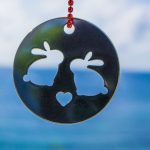
Miho Shimizu is a Japanese freelance writer settled in Shizuoka with her husband and two rabbits. Fascinated with travelling at the age of 18, she has spent most of her long holidays exploring incredible spots around Japan. Also love to listen to music, draw, and read novels over a cup of green tea.
